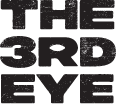At The 3rd Eye, our agency is brimming with talent. And our CCO Rob gathers this overflow of creativity into workable creative campaigns for clients. He’s our big idea man—helping us figure out which ones will work & which are better left in the graveyard.
And it seems his merits and experience weren’t lost on CLIO. Our connoisseur of creativity was chosen to put his talents to use—as a judge in the Craft Jury for the 2022 Clio Health Awards.
We asked him a few questions to get a behind-the-scenes look at the critical process—and got his expert insight into health and wellness marketing trends on the rise in 2022.
- How did your experience at The 3rd Eye prepare you to be a jury member?
- How did you get on the Craft Jury for the 2022 Clio Awards?
- What was the Craft Jury’s role?
- What was the judging process like?
- Where do you see health & wellness advertising going in 2022? (Click here for trends!)

How did your experience at The 3rd Eye prepare you to be a jury member?
“I’ve seen so many health and wellness brands come to life—both pitching to clients and looking at competitors.
After seeing such a variety of approaches, I know what works and what doesn’t. I’ve learned to recognize true innovation in the category versus creative that just mirrors what’s already out there.
In the Craft Jury, you’re judging creativity—and creativity alone. Since I’m exposed to this type of work every day, it’s innate to look at it and think: this makes sense or it doesn’t.
Coming from an agency without health and wellness brands, I wouldn’t have had the same understanding of why the creatives I judged made the choices they did.”
How did you get on the Craft Jury for the 2022 Clio Awards?
“I was featured in Muse by Clio’s The Year in Creativity, 2021, which connected me to the people at CLIO.
Then, fast-forward a few months; and they reach out to me the week after my son is born! So, I wasn’t even technically working when I saw the email. And running on no sleep, I thought it was spam at first.
In my brain fog, I remember texting Diana a screenshot to verify, ‘hey, I don’t know if this is real—but I should do this, right?’ which is a dumb question, because the answer is always yes. She told me ‘you better f—ing do it!’ So, I reached out to them and did it.
And it was a long, long, long process.”
What was the Craft Jury’s role?
“We were judging creativity and craft for health and wellness brands. We assessed the crafts themselves—looking at them through the lens of creativity.
There were different categories like art direction, film/video, and sound design—and what we judged was very targeted. So, I’m not looking at a campaign holistically; instead, I’m judging it based on the category that it is in and the craft of that category.
It’s quite different from what the consumer does—which is take everything in as a whole. Sometimes I’d be blown away by one category and underwhelmed by another, which would never happen if I’d come across the ad as a consumer. We segmented campaigns and creatively judged them piece by piece—which made for fascinating panel discussions.”
What was the judging process like?
“Well, it wasn’t just seeing it once and deciding. It was thorough! There were 3 rounds before a virtual discussion that took all day.
1 – In the first round, you’re judging pieces on a scale of 1–10. To give you an idea, we reviewed over 120 minutes worth of video.
2 – In the second round, we take a look at each piece with last round’s scale—deciding whether it’s in or out.
3 – In the third and last round, we decide which statue to assign each piece. Is it gold, silver, or bronze?
THEN, we’d all meet—and that’s where the discussions would happen. They’d put up what all the awards were. If someone thought a piece was deserving of a higher statue, it would prompt a discussion.
I can’t talk about the work, but there was one creative piece for newspaper. And when I read it, I thought, wow that’s really impactful. We ultimately decided the impact it was making on our discussion was enough reason to rank it higher.
My favorite comment from another panelist came from that discussion—which I agreed with completely. She said:
“We should be judging things to celebrate the work we want to see.”
Considering what you judged, where do you see health & wellness advertising going in 2022?
“I’ll tell you about 3 changes I’m seeing that excite me:
1 – We’re being more human than before.
Being campy and corny in advertising is easy, but I find that we’re being more human in health and wellness brands than before. Changing behavior isn’t something that’s compelled by reason. There’s always an emotional component that drives. A deeper connection.
It’s more about storytelling, connecting with the audience, and speaking to a real person’s experience.
2 – More comedy is coming in.
I also love that there’s more comedy coming in. It’s such a buttoned-up category that you forget that—just like with anything medical—there’s a bedside manner that applies to the creative too!
3 – We’re challenging the paradigm of what’s expected from health & wellness brands.
This one excites me the most. I saw it done in different ways. It can be comedic, it can be emotional.
Healthcare advertising is usually very pragmatic. It’s ‘we’ve got what you need’ or ‘here’s a health hack.’ Now, there’s a stronger emphasis on empowering people to make the choice for themselves.”



